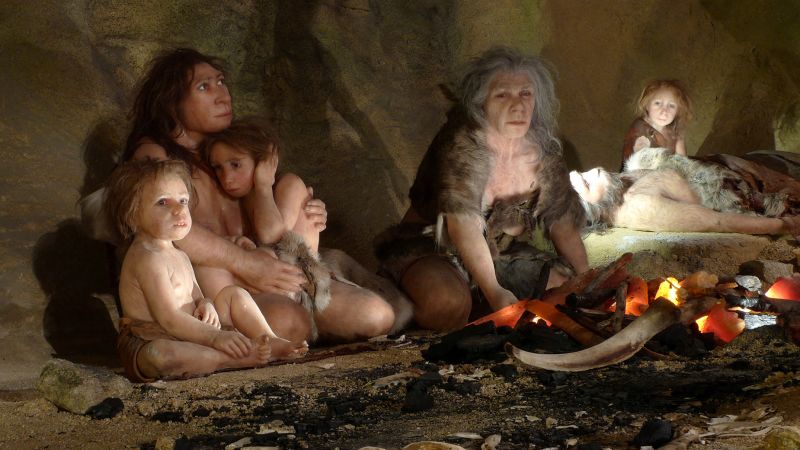Science / Unearthed
How did Neanderthals disappear? New DNA analysis sheds light on the mystery
By Katie Hunt, CNN
6 minute read
Updated 9:19 AM EDT, Wed July 31, 2024

An exhibit in a Neanderthal museum in Krapina, Croatia, shows the life of a Neanderthal family in a cave. Nikola Solic/Reuters
Sign up for CNN’s Wonder Theory science newsletter. Explore the universe with news on fascinating discoveries, scientific advancements and more.
(CNN) — The
2010 discovery that early humans and Neanderthals once interbred was a scientific bombshell — the revelation of a genetic legacy that’s since been found to play a role in the lives of modern people, influencing
circadian rhythms,
immune system function and the way some feel pain. ... Scientists, however, have found it surprisingly hard to piece together gene flow in the opposite direction: how intermingling between the two groups may have shaped Neanderthals, who went extinct around 40,000 years ago. With the help of new techniques, a new study is painting a clearer picture.
The analysis,
published July 12 in the journal Science, showed that the two groups exchanged DNA at multiple points over the past 250,000 years, shedding light on how Neanderthals disappeared and potentially rewriting the story of how and when our Homo sapiens ancestors left Africa.
“To date, most genetic data suggests that modern humans evolved in Africa 250,000 years ago, stayed put for the next 200,000 years, and then decided to disperse out of Africa 50,000 years ago and go on to people the rest of the world,” said Joshua Akey, a professor at the Lewis-Sigler Institute at Princeton University and senior author of the study. ... “But genetics is essentially blind to anything that doesn’t leave ancestry to present day populations. What I think (is) kind of cool about this (paper) is that it provides genetic insights into these dispersals out of Africa that we previously weren’t able to see,” Akey said.
The findings suggest that very early human history was complex, and modern humans likely interacted with Neanderthals — and other types of archaic humans, including the
enigmatic Denisovans — much more frequently than previously recognized since our emergence as a species around 250,000 to 300,000 years ago.
{snip}
